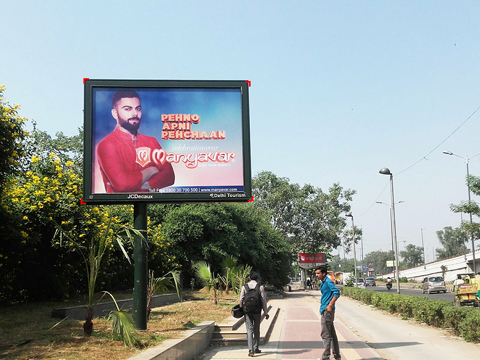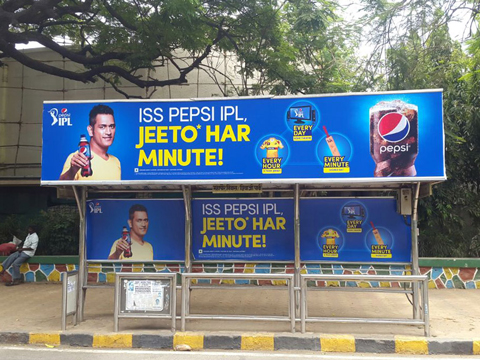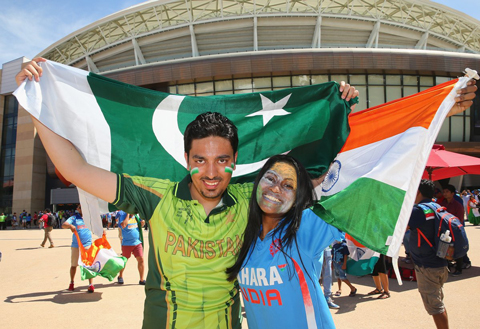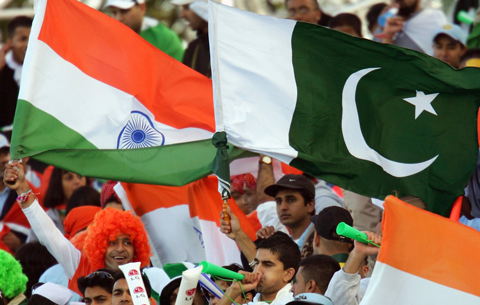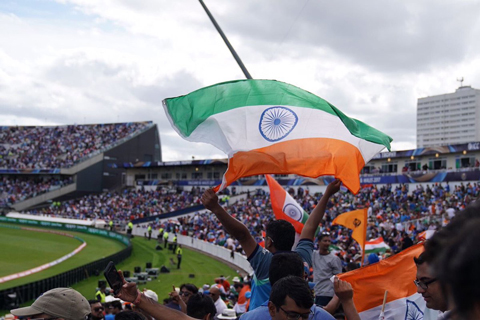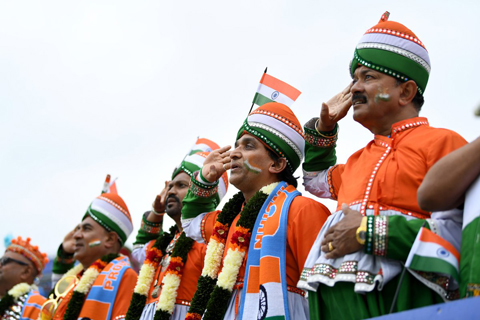CRICKET NATION!
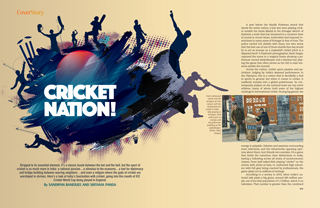
Stripped to its essential element, it’s a classic tussle between the bat and the ball, but the sport of cricket is so much more in India: a national passion…a stimulus to the economy…a tool for diplomacy and bridge-building between warring neighbors…and even a religion where the gods of cricket are worshiped in shrines. Here’s a look at India’s fascination with cricket, going into this month of ICC Cricket World Cup being played in England.
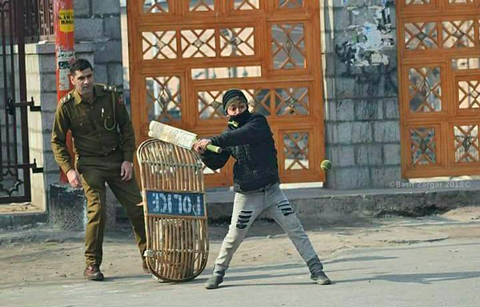
Even communal unrest and the prospect of riots cannot curb the enthusiasm for cricket in India…kids playing in Srinagar, with police gear as stumps and the policeman doubling as the wicketkeeper.
(Photo: Basit Zargar)
A year before the deadly Pulwama attack that shook the entire nation, a boy was seen playing cricket outside the Jamia Masjid in the Srinagar district of Kashmir, a state that has remained in a constant state of unrest in recent times. Authorities had imposed restrictions in many areas of Srinagar in fear of riots. The police carried riot shields with them, but who knew that the best use of one of those shields that day would be to act as stumps on a makeshift cricket pitch in a disputed land? A Kashmiri photographer, Basit Zargar, captured the scene in a magical frame showing a policeman turned wicketkeeper and a fearless boy playing the game that often serves as the foil to ease tensions amidst the turmoil.
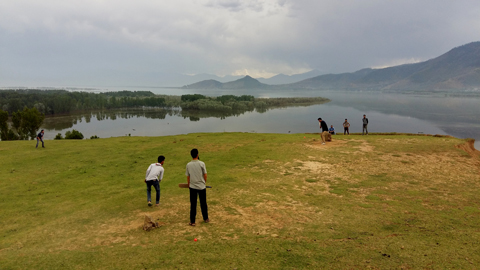
From the remotest region of India to its urban centers, the game plays out daily in a million different settings.
Across the nation, cricket spurs passion and patriotism. Judging by India’s abysmal performance in the Olympics, this is a nation that is decidedly a dud in sports in general. But when it comes to cricket, it suddenly morphs into a global powerhouse. Its contemporary players on the national team are top notch athletes, many of whom hold some of the highest rankings in international cricket. During big games, the energy is palpable. Debates and passions surrounding team selections, and the vehemently opposing opinions about them, turn friends into enemies.
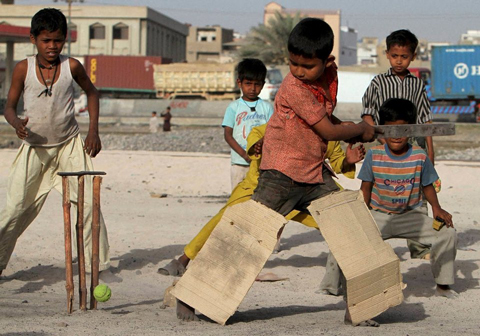
Whether rich or poor, whether with real gear or with make believe pads made from cardboard, cricket is irrepressible in this cricket nation.
It’s a game that levels the notorious class distinctions in India, having a following across all strata of socioeconomic classes. From half-naked kids playing “cricket” on the streets with sticks as bats, to uniformed high schoolers with full gear being coached by professionals, the game plays out in millions of settings.
According to a survey in 2014, when India's national side plays a big game, around 400 million people, out of its total population of 1.3 billion, watch it on television. That number is greater than the combined population of the U.S. (329 million) and the U.K. (66.5 million). Imagine these two entire nations watching a sport on TV for more than eight hours—that is the Indian viewership of a single big game of cricket.
Cricket may be a vestige of India’s colonial history, but the sport has now become an obsession in the country. Nowadays during a match, millions of hearts pump simultaneously with each shot that Virat Kohli or M. S. Dhoni plays, or with each yorker that Jaspreet Bumrah hurls. Cricket is nothing less than a phenomenon in India, and this is borne out not just by the charged emotions, but also by raw data.
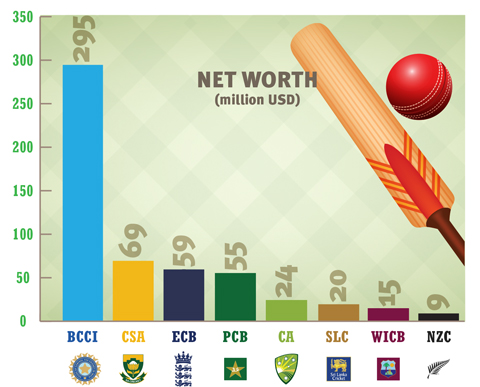
India: The financial powerhouse of cricket
With a whopping net worth of $295 million, the
Board of Control for Cricket in India (BCCI) is the richest
cricket board in the world. This amount is more
than four times that of the Cricket South Africa (CSA),
which is the second most valued cricket board.
And with money, comes power.
A massive chunk of the annual revenue of International Cricket Council (ICC) comes from India, giving the BCCI an outsized role in dictating terms in world cricket affairs. Without the approval of the Indian cricket board, no decision can be sanctioned in an ICC meeting—much like America’s autocracy in the United Nations.
The key factor behind BCCI’s financial superiority is the brand value of Indian cricket which stems from the worldwide viewership that it draws. According to the largest ever market research conducted by ICC in 2018, 90% of the sport’s global fan base of 1 billion is Indians.
Not surprisingly, for the sports broadcasters around the world, the television right for Indian cricket is considered the Holy Grail. In 2018, Star India paid a grand sum of INR (Indian rupees) 6138.1 crore (about $944 million) to bag the broadcasting rights of Indian cricket for the 2018-2022 period. This did not include the rights for the Indian Premier League (IPL), which was a far bigger “catch.” Star India made a successful consolidated bid for five years of IPL rights (2018-2022) at INR 16347.50 crore (around $2.55 billion).
|
|
|
The demigods of cricket, in their larger-than-life avatars, proliferate in the urban and rural landscapes of India. A good chunk of Virat Kohli’s earnings of INR 228.09 crore ($34.28 million) in 2018, came from product endorsements.
Add the sponsorship and other commercial deals of BCCI, as well as the deals that the top Indian players individually have, and it will be easier to understand the financial enormity of Indian cricket. For instance, Virat Kohli, the current Indian captain, is the world's top earning cricketer and features ahead of other highprofile global athletes such as Novak Djokovic, the Serbian tennis player, and Sergio Agüero, the Argentinian soccer player. According to Forbes India, Kohli earned a whopping INR 228.09 crore ($34.28 million) in 2018. The former skipper M. S. Dhoni, the second biggest brand of contemporary Indian cricket, had earnings of INR 101.77 crore in 2018. In fact, even cricketing legend Sachin Tendulkar, who retired back in 2013, generated revenue of INR 80 crore last year.
IPL, the game changer
Ever since the C. K. Nayudu-led Indian team stepped onto the Lord’s Cricket Ground on June 25, 1932, Indian cricket has had many milestone moments to cherish. But amongst them all, two occasions stand out. India’s first World Cup victory in 1983 was
a huge morale booster that notched up the confidence of the players and the fans, ratcheting up the stock
of Indian cricket, while also launching it onto a trajectory of gradual global dominance. But it was the launch of the Indian Premier League (IPL) in 2008 that has completely transformed the face of the game in this country.
The IPL introduced a huge commercialization factor in the game. While traditionalists have lamented that, it can’t be disputed that the League has helped strengthen the supply chain of top talent, resulting in the national team’s dominance across all formats at the international level.
“When India won the 1983 World Cup, the BCCI did not have enough money to reward the players,” recalls Santosh Suri, a senior cricket journalist in India, who has spent almost three decades of his professional career with the Times of India. “Lata Mangeshkar was requested to host a show to collect funds for the champions. There is no doubt that the 1983 win forever changed the way cricket, especially One Day International (ODI), was played and followed in India. Over the decades India always had a big following for cricket. But it required the introduction of the IPL in 2008 to bring in the windfall, so much so that now BCCI dominates the cricket world due to its financial strength,” adds Suri.
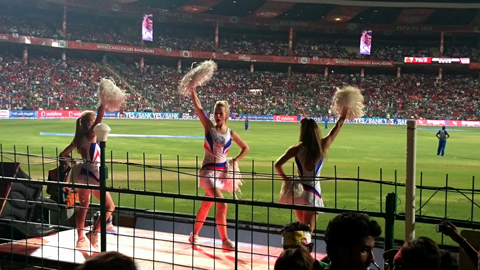
The Indian Premier League (IPL), a game changer, is cricket on steroids: big money and a combination of cricket and entertainment—“cricketainment.”
IPL, a franchise-based domestic cricket league in India, is the most watched annual cricket event in the world. In fact, IPL is not just cricket; it is a unique combination of cricket and entertainment—or “cricketainment,” if you like.
According to an estimate by Duff & Phelps, till 2018, the brand value of IPL was $6.3 billion. According to the latest available estimates, two of the most popular franchises of the IPL—Mumbai Indians and Kolkata Knight Riders—have brand values of $113 and $104 million respectively. A couple of other franchises, Chennai Super Kings and Royal Challengers Bangalore, are also quite close to joining the 100-million dollar club.
According to Live Mint, 411 million unique TV viewers watched this year’s IPL in the first four weeks at an average of over 28.2 million viewers per game—that is, it went up about 16% from the 2018 season of the marquee tournament.
The average viewership numbers for the Indian Premier League on traditional television is 411 million; on digital platforms, it is 267 million. It now also holds the global live streaming record with a concurrency of 12.7 million viewers set during the Royal Challengers Bangalore vs. Mumbai Indians game on March 28, 2019.
Now let’s shift our focus a little from these numbers and look at IPL from the point of view of players.
With eight franchises and place for as many as seven Indian cricketers in each playing XI, the IPL is the best available platform for the domestic cricketers in this country to showcase their talent. Unofficially, it is considered a quick gateway to the national team. The selectors take the performances of IPL very seriously; that’s evident from the rapid rise of contemporary star players like Jasprit Bumrah and Hardik Pandya, who first came into the limelight through IPL.
“Well, it is a very important platform for a player like me,” says Virat Singh, the former India Under-19 skipper. “No matter what you do in domestic cricket, however many runs you get, if you want to play one-dayers and T20s for India, you have to do well in IPL.”
“For a young and upcoming player like me, featuring in the IPL is a must. It’s a huge learning curve. You get to share a dressing room with legends of the game. This experience can improve our game drastically. Also, more than the money, IPL is an exposure which every young cricketer aims for. Even after doing consistently well in domestic T20 cricket, players do not get the due recognition unless they play and perform in IPL,” Singh adds.
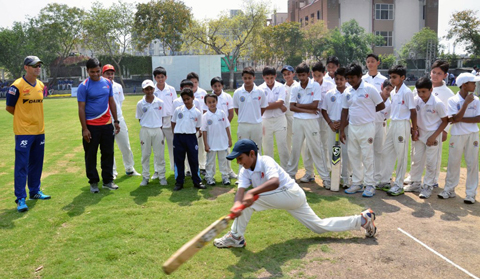
(Left) Churning out future champions: a cricket academy in New Delhi. (Photo source: whatsuplife.in)
Thanks to IPL, India now has a deep pool of player resources. Furthermore, with the money coming in, domestic players have a financial incentive, which in turn attracts more talent.
Since its inception, IPL has gradually influenced India’s on-field performance. In 2010, two years after the commencement of IPL, India became the No. 1 ranked Test team in the world for the first time. Next year, the M. S. Dhoni-led side went on to win the ICC Cricket World Cup at home. At present, if not the best, India is one of the top three teams in the world across all three formats. And many players who have emerged through the ranks of IPL have played key roles behind this success.
India is currently one of the top ranked teams in all three formats of the game: Test, ODIs, and T20. Seen here are the triumphant stars with their 2011 ICC World Cup trophy.
India’s on-field dominance
Today, India is considered a dominant force in both white ball (T20s and ODIs) and red ball (Test) cricket. They have depth in quality in their line-ups and are a tough nut to crack across all conditions. In Test cricket, the Indian team is currently the highest ranked side according to ICC, whereas in ODIs and T20 Internationals they rank second and fifth respectively.
However, irrespective of the top rankings, in this decade, India’s overseas performance in Test cricket hasn’t been up to the mark. Before their maiden series win in Australia earlier this year, India’s previous triumph in the SENA (South Africa, England, New Zealand, and Australia) countries came in New Zealand during the 2009-10 tour.
Since the retirement of legends like Sachin Tendulkar, Rahul Dravid, V. V. S. Laxman, Sourav Ganguly, and Anil Kumble, the team has gone through a transition period. And the lack of experience, especially in the batting line-up, has had its effect on their dismal outings in some of the tours.
However, in more recent overseas outings, players like skipper Kohli, Cheteshwar Pujara, Ajinkya Rahane, and others have shown maturity and resistance with the bat. And in bowling, with the likes of Bumrah, Mohammed Shami, Bhuvneshwar Kumar, Kuldeep Yadav, Ravichandran Ashwin, Ravindra Jadeja, and others, India arguably has the best attack in the world with the red ball.
To sum up, following an uncertain phase, things are finally falling in place for the Indian team and it was evident when they dominated Australia in their own backyard earlier this year.
Comparatively, in the ODIs and T20s, the transition in this post-Tendulkar era has been quite smooth. The Rohit Sharmas and the Shikhar Dhawans alongside Kohli have taken the center stage and dominated proceedings with the bat in white-ball cricket. In addition to that, a versatile bowling attack makes them an even stronger team overall.
Hence, going into the ICC Cricket World Cup 2019 in England and Wales, the experts consider India as the second favorite, after the hosts, to win this pinnacle event of the cricket world for the third time.
|
|
|
The legendary Indo-Pak rivalry is a star attraction for fans of both these countries.
The India-Pakistan rivalry
Following Partition in 1947, Pakistan first stepped into Test Cricket in October 1952 when they toured India for a five-match series. Ever since that day in history, the rivalry of the two nations has played out on an epic scale, arguably bigger than the ‘Ashes’ played between England and Australia.
Till date, India and Pakistan have fought three full-fledged wars and innumerable proxy encounters. Yet, in more than six decades, their rivalry in cricket has never lost its charm. Political ups and downs notwithstanding, they have carried on playing each other with hints of drama on and off the field. In the initial years, it was Pakistan who used to have a wood over the Indians, but in this century, India has completely dominated their arch rivals. Fans still cherish the milestone moments that have occurred in various matches over the years, thanks to this intense competitiveness between the two South Asian neighbors.
Can we, for instance, ever forget the Kapil Dev vs. Imran Khan rivalry? Or Javed Miandad’s last ball six off Chetan Sharma in 1986 or Sachin’s 136 knock in Chennai in 1999? And who doesn’t recollect Misbah-ul-Haq’s miscued scoop shot in the 2007 World T20 Final?
Such is the intense public engagement with India-Pakistan cricket that even the governments of both nations have used cricket as a diplomatic tool during peace and war. Unfortunately, in recent years, political tensions have peaked to such an extent that the arch rivals don’t play each other anymore at a bilateral level. They only take on each other in multi-team events.
It’s been six years since the two teams, with the most passionate cricket fans in the world, played a bilateral series amongst them. The India vs. Pakistan fixture has become a once-in-a-year affair during ICC events or series like the Asia Cup. Even so, nothing stokes the fire of patriotism among audiences from both nations more than an India-Pakistan game.
In 2015, when India and Pakistan met at the Adelaide Oval for a World Cup match, the excitement was unprecedented. Over one billion people, which is two-thirds of the combined population of both the nations, watched the broadcast of the game. The viewership record finds its name in Wikipedia’s list of most-watched television broadcasts. India won that one, establishing a 6-0 win record against Pakistan in the 50-over Cricket World Cups.
In 2017, it was Pakistan who pulled one back in their favor they as they beat a much-fancied Indian team in the Champions Trophy final at the Oval.
Coming to the present, with ICC Men’s Cricket World Cup upon us, political tensions have worsened and cricket diplomacy has been the victim. In fact, the BCCI unofficially wanted to withdraw the Indo-Pak game but the ICC rejected the petition. Hopefully, it will be an exciting experience when the two teams clash at Manchester on June 16, as India would want to prove their World Cup dominance once again.
|
|
|
Fandom defines Indian cricket!
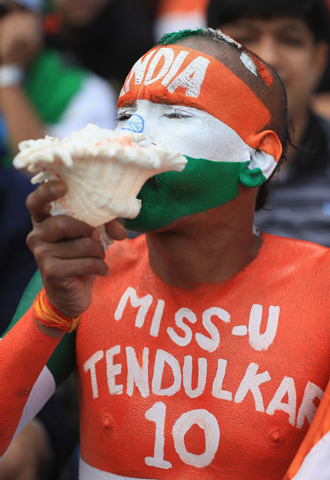
Indian cricket commands a global fan following
The Indian team is the most followed cricket squad in the world. Whether they are playing at home or abroad, you will always see passionate Indian supporters waving the tricolor at the stands. In the late 90s and early 2000s, the country used to come to a standstill whenever India featured in an international cricket match. However, these days with so much cricket happening due to IPL, as well as internationally, things have changed a little. Now, the focus has been shifted to the online following of the sport. The passion, though, remains the same.
Even today, during live cricket matches, one sees crowds gathering in front of TV sets in stores. Indian fans spend thousands of dollars in order to follow their beloved team on important foreign tours, much like the touring English fans. In the coming World Cup in England, it is estimated that at least 80,000 Indian fans are traveling to cheer for the “Men in Blue.”
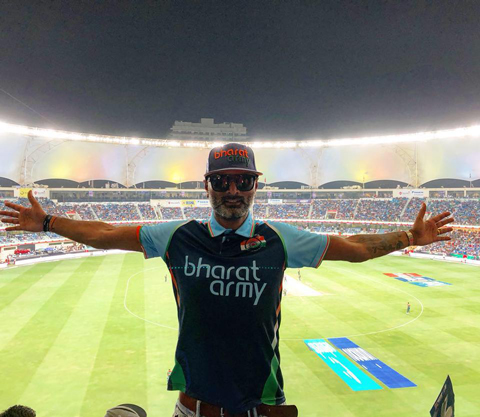
(Right) Rakesh Patel, founder and CEO of Bharat Army, team India’s most visible fan club.
And then, there’s Bharat Army, the Indian team’s official—and most visible—fan club. We spoke to the founder and CEO, Rakesh Patel, about his professional management of this group.
“We formed the Bharat Army back in 1999, following the India vs. Pakistan game in Manchester. In that particular match, we [the Indian supporters] at the stands were completely outnumbered by the Pakistani fans. So I, along with some of my friends, decided to form an official fan club for the Indian team to take care of all the needs of a cricket fan who wants to follow the side both at home and abroad,” says Patel.
“Now, again in Manchester, the arch-rivals are taking on each other on June 16 and prior to the game, we will celebrate our 20th anniversary. And let me tell you, this time we will occupy the most number of seats.”
“Overall in this World Cup, 11,000 fans from 26 nations are traveling to the United Kingdom under the banner of Bharat Army. We run this forum professionally and are now recognized by the ICC and other boards as well.”
These are contemporary—and expensive—expressions of fandom from among the well-heeled. However, one has only to drive or stroll through small Indian towns and villages to understand that the true essence of cricket still springs from the streets, corners, gullies, and paras where the game is not just played but is revered like oxygen, essential to existence.
Sandipan Banerjee is a Kolkata-based cricket journalist who follows the Indian cricket team around the world. A bits-and-pieces cricketer during his playing days, Sandipan's avid love for the game is evident from his work in different media platforms. Sritama Panda is an engineering graduate turned cricket writer, who lives for the sport she’s incessantly crazy about.
Enjoyed reading Khabar magazine? Subscribe to Khabar and get a full digital copy of this Indian-American community magazine.
blog comments powered by Disqus




